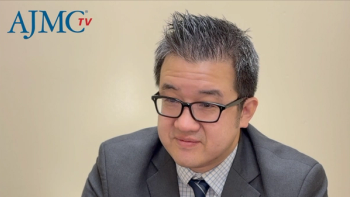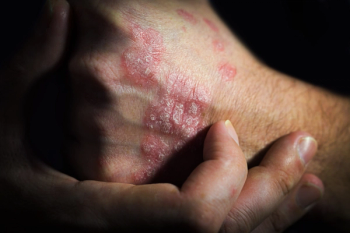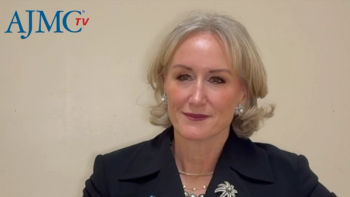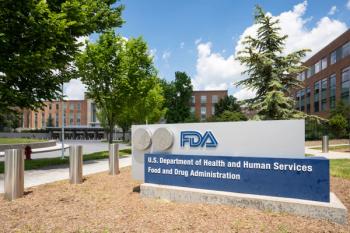
A Look at Those With Durable Responses to Epcoritamab in LBCL
Key Takeaways
- Patients with lower baseline tumor burden and ferritin levels were more likely to achieve CR after two years of epcoritamab treatment.
- Epcoritamab demonstrated a median CR of 36 months and a median progression-free survival of 37 months in LBCL patients.
A post-hoc analysis of EPCORE-NHL-1 was presented at ASCO.
Patients with large B-cell lymphoma (LBCL) who had complete responses (CR) after 2 years of treatment with subcutaneous epcoritamab (Epklinly, AbbVie/Genmab) were more likely to have lower tumor burden at baseline and had lower baseline ferritin levelsthan those who did not have a CR at 2 years, according to new look at data from the pivotal phase 2 EPCORE-NHL-1 trial. (NCT03625037).1
Those who achieved a CR at 2 years also had lower baseline ferritin levels than those who did not have a CR at that point; however, prior treatment with chimeric antigen receptor (CAR) T-cell therapy was similar between the groups, results show. Data were presented in an abstract at the recent
Epcoritamab, a bispecific T-cell engager targeting CD20 and CD3, has FDA approval to treat patients with follicular lymphoma (FL) who have received at least 2 prior lines of systemic therapy; approval was based on results from the pivotal cohort of EPCORE-NHL-1 that were published in
The ASCO abstract presented long-term results from a post-hoc analysis of 157 patients with LBCL enrolled in EPCORE-NHL-1.1 Treatment with epcoritamab was offered in 28-day cycles, starting with 0.16 mg and 0.8 mg step up doses and working to a 48-mg full doses, which were given once weekly for cycles 1-3, then every 2 weeks for cycles 4-9, and every 4 weeks thereafter until progressive disease or unacceptable toxicity.
After 3 years of follow-up, epcoritamab monotherapy produced a median CR of 36 months, a median progression-free survival (PFS) of of 37 months and overall survival (OS) was not reached in patients who had CR.
The post-hoc analysis compared characteristics for patients who had a CR at the 2-year mark vs those who had not achieved a CR at 2 years. The primary end point was overall response rate (ORR). At the May 3, 2024, data cutoff, 41% (65 patients), had achieved CR, with 32 (49%) maintaining it at the 2-year mark. This group had a mean age of 63 years, with 47% male, and 66% refractory to at least 2 prior lines of therapy.1
Details of the data show:
- 19% of those with a CR at 2 years had lower tumor burden at baseline (bulky disease greater than 7 cm), compared with 34% who did not.
- Lactate dehydrogenase levels were 294 vs 501 U/L for those who achieved at CR at 2 years vs those who did not;
- Patients in CR at 2 years had lower baseline ferritin levels (383 vs 856 mg/L).
- 38% of those with a CR at 2 years had prior CAR-T treatment, compared with 39% for those who did not have a CR at 2 years.
- Safety data were similar for those who did and did not have a CR at the 2-year mark
“Depth and duration of CR correlate with long-term outcomes in LBCL,” the authors concluded. “This novel subgroup analysis of pts with R/R LBCL in CR at 2 [years] after starting epcoritamab highlights long-term disease remission, overall survival, and potential for cure with epcoritamab in some patients,” the authors wrote.
References
- Karimi Y, Vose J, Clausen MR, et al. Novel analysis of 3-y results from the pivotal EPCORE NHL-1 study: Outcomes in patients (pts) with relapsed/refractory large B-cell lymphoma (R/R LBCL) and complete response (CR) at 2 y with epcoritamab (epcor) monotherapy. J Clin Oncol. 2025;43(suppl 16): Abstract 7043.
- Linton KM, Vitolo U, Jurcack W, et al. Epcoritamab monotherapy in patients with relapsed or refractory follicular lymphoma (EPCORE NHL-1): a phase 2 cohort of a single-arm, multicentre study. Lancet Haematol. 2024;11(8): e593 - e605 doi: 10.1016/S2352-3026(24)00166-2.
Newsletter
Stay ahead of policy, cost, and value—subscribe to AJMC for expert insights at the intersection of clinical care and health economics.












































